What is Orbital Velocity?
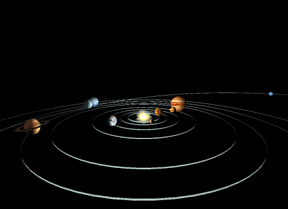
How fast a planet travels as it moves around the Sun is called orbital velocity.
Planets that are close to the Sun have large orbital velocities. This is because of Keplerís second law. This means that Mercury, the closest planet to the Sun, is the fastest moving planet in our solar system!
Our Solar System
Click on image for full size (15K GIF)
Windows Original
 Learn more about orbital velocity and experiment with Keplerís second law!
Learn more about orbital velocity and experiment with Keplerís second law!
You might also be interested in:
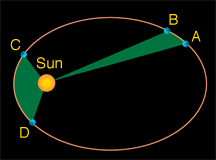
Kepler realized that the line connecting the planet and the Sun sweeps out equal area in equal time. Look at the diagram to the left. What Kepler found is that it takes the same amount of time for the
...more
AU stands for Astronomical Units. It is an easy way to measure large distances in space. It is the distance between the Earth and the Sun, which is about 93 million miles. For really big distances, we
...more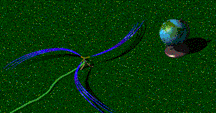
The solar wind is formed as the Sun's top layer blows off into space. It carries magnetic fields still attached to the Sun. Streams appear to flow into space as if they are spiraling out from the Sun,
...more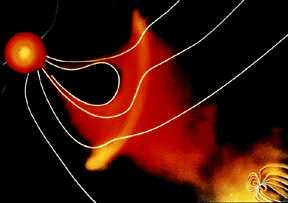
For a planet to be affected by a blob of material being ejected by the sun, the planet must be in the path of the blob, as shown in this picture. The Earth and its magnetosphere are shown in the bottom
...more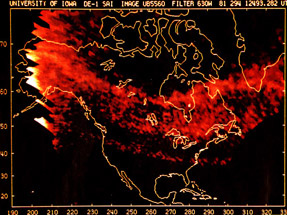
If someone says they saw an aurora, you might picture something like this. There is another type of aurora that we can't see. These aurora are called SAR arcs. The SAR stands for Stable Auroral Red. That
...more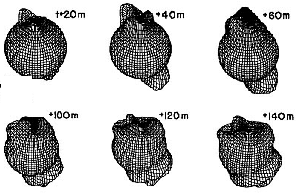
This figure shows the effect of the aurora on the atmosphere. When FAC's enter the atmosphere and create the aurora, they heat the atmosphere suddenly and abruptly. This creates an impulse which travels
...more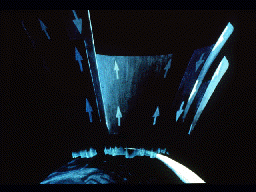
This picture shows the flowing of particles into and out of the auroral zone, as Field-Aligned currents (FAC's) take at short-cut through the atmosphere. Some of the particles entering the auroral zone
...more

 Learn more about orbital velocity and experiment with Keplerís second law!
Learn more about orbital velocity and experiment with Keplerís second law!














